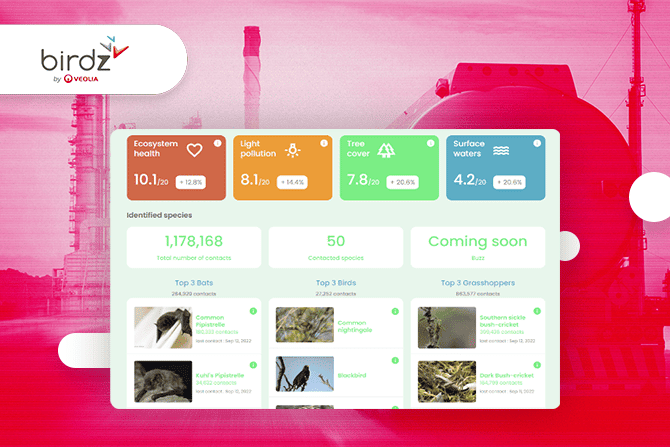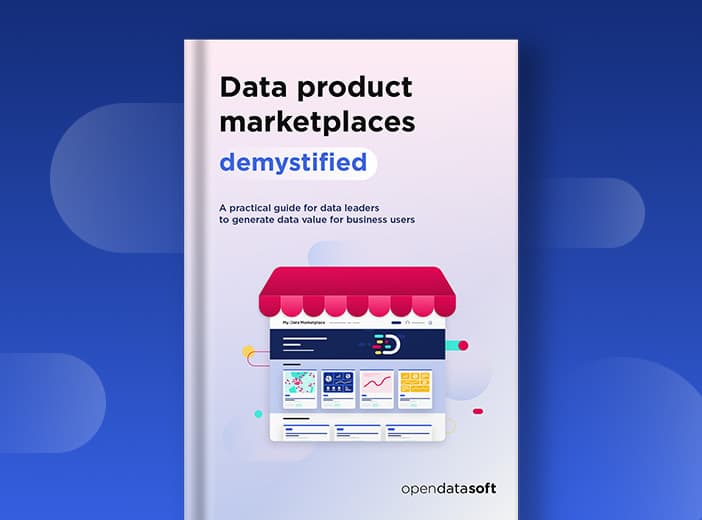Choosing the right data dashboard to improve decision-making in your organization
Data dashboards enable this sharing and therefore underpin decision-making. What are the advantages and potential uses of data dashboards? How can you build the best data dashboards for your organization? Find out more in this article.

Organizations of all sizes across every industry generate increasing volumes of data through their day-to-day activities. This data is critical to improving operations and monitoring performance. But to take real advantage of this data and use it to make better, faster decisions, and drive innovation, you need to collect it in one place, be confident that it is high quality and be able to share it widely in relevant formats.
Data dashboards enable this sharing and therefore underpin decision-making. What are the advantages and potential uses of data dashboards? How can you build the best data dashboards for your organization? Find out more in this article.
Data dashboards: what are the benefits for your organization?
A dashboard is a web page that groups selected data together, and displays it graphically. This provides multiple benefits. Users can:
- Consult data in real-time: By automating connections with your data sources as soon as new information appears, dashboards are automatically updated. This allows decision-making to be based on the latest, most reliable information.
- Centralize and enrich data: through the dashboard format, you can centralize data from different sources and different datasets. This brings context to data, allowing it to be easily interpreted.
- Visualize data: to simplify understanding of data, you can group different types of visualizations (such as KPIs, graphs, maps, and timelines) together. This allows users to quickly visualize trends related to a specific problem.
- Customize your dashboard: each department within the organization can tailor its dashboard based on its needs. They can customize through the choice of performance indicators, visualization methods, and data sources used, for example.
Ultimately, the dashboard is a powerful decision-making tool that allows you to use data to make the right strategic and operational choices.
Who are data dashboards for?
Data dashboards are created for different purposes and can be used by different groups inside and outside the organization.
Employees
Data dashboards are essential tools for employees with internal data platforms providing access to different dashboards, organized by theme. The objective is to share strategic objectives and key performance indicators internally in order to improve operational efficiency and to empower teams. Dashboards are also an invaluable support for executives and managers who can report on their activities and take action if they spot issues.
Some organizations provide front-end business applications that allow employees to interact with and update dashboards. For example, by reporting a safety incident in the workplace, the numbers on a health and safety dashboard could be automatically updated.
It is also possible to share the company’s vision and objectives via dashboards, showing progress towards achieving them. This transparency helps to strengthen the commitment of employees to the organization.
Partners
Beyond employees, organizations can also share some of their dashboards with partners in their ecosystems. For example, they can share an inventory status dashboard with suppliers to help supply chain planning or network information with external service and maintenance partners.
Sharing dashboards with partners can take different forms:
- Creating restricted access to the organization’s internal data marketplace,
- Creating dedicated, standalone dashboards on an independent marketplace.
Sharing data with partners allows organizations to create value in their ecosystem and can also generate new revenue streams. However, as partners are not internal employees you must be extra vigilant in managing access rights and security.
Citizens, customers, media and other stakeholders
In addition to corporate dashboards aimed at a specific target, it is possible to build dashboards for the general public, available on your open data marketplace.
You can share your organization’s own data, as long as it is neither personally identifiable or confidential. For example, dashboards can be used as part of your Corporate Social Responsibility (CSR) policy, to show your organization’s non-financial and sustainability commitments.
Dashboards can also be used to simply present data of public interest, such as energy consumption in a particular area, administrative procedures, boundary maps, information on municipal budgets, the deployment of new equipment or forthcoming cultural events.
What makes a good dashboard?
A successful dashboard has to be an information and decision support tool that is adapted to the needs of those that use it. Based on this key point, follow these best practices to design effective business dashboards:
- Data preparation: before visualizing data through a dashboard, it is essential to ensure it is reliable and high quality.
- Data sorting: the dashboard’s objective is to make data accessible to as many people as possible. This may mean that rather than showing all the available data, you need to select the most relevant information according to your objective and your users.
- Data visualizations: To facilitate understanding of the data, the dashboard must provide strong data visualizations: graphs, maps and indicators to summarize trends at a glance. It is also recommended that you create data stories by combining text elements, images and external links to give maximum context to your data.
- Ease of use: the dashboard should be easy to understand and use, by both data experts and non-experts alike. The goal is to encourage the reuse of data to create new uses for it. Ensure your dashboard has search and sorting capabilities, as well as the ability to download data in multiple formats.
The 3 types of dashboards organizations can deploy
There are three main categories of dashboards that can be used in organizations, as described below with concrete examples.
Reporting dashboards
The objective of reporting dashboards is to analyze and monitor the organization’s global KPIs. Most of the time, these dashboards are only distributed internally, and more specifically to management. They enable people to see if objectives have been achieved and identify areas for improvement.
In each department of an organization, dashboards allow better decision-making:
- Financial dashboards: to evaluate the financial health of the organization through KPIs, such as revenues, costs and projected spend. The creation of automated dashboards saves a lot of time on finance-related tasks. Discover how it saves insurer Lamie mutuelle three days a month.
- Management committee dashboards: to monitor decisions made by management and communicate them to the rest of the organization. This is one of the dashboards set up by ICF Habitat, a real estate subsidiary of the SNCF Group, to communicate the company’s values and the minutes of its works council. This type of initiative can also be found in the public sector, with the Mayenne department, for example, making reporting dashboards available to elected officials.
- Strategic dashboards: to share high value-added information and create innovation in the sector. This is what Schneider Electric provides to its partners via its data marketplace, which brings together dashboards to better manage energy consumption in buildings.
The aim of reporting dashboards is to analyze performance indicators and adapt the strategy according to the objectives to be reached. They can also help make future predictions to aid longer-term decision-making.
Good to know: Although dashboard reporting is normally internal to the company, it is also possible to consider public reporting dashboards. This is notably the case with the Signal Conso dashboard set up by the French Ministry of the Economy. This dashboard shows products that have been recalled and complaints made against companies. Citizens can add their own complaints and comments, with the dashboard then used by officials to take action.
Management dashboards
Dashboards are essential to manage an organization’s daily operations. These dashboards are often enriched by front-line employees to provide information, and then used by staff in support functions to optimize workflows.
Each business sector can benefit from these dashboards:
- SNCF Réseau: the railway group has created internal dashboards to monitor all trains and work projects. The latter includes a map of current operations and an analysis of interventions made in order to improve the management of the railway network on a European scale.
- ICF Habitat has deployed several dashboards to manage its development and asset plans. In addition to dashboards summarizing all activities (such as building acquisitions and renovations), the company offers data-driven tools to enable employees to be more efficient in their roles.
- Grand Paris Seine Ouest has set up a dashboard for the Maison de la Nature et de l’Arbre which allows the manager and the various cities involved to manage the projects.
Communication
Finally, dashboards are also essential tools for communicating information widely via public data marketplaces. Public and private organizations use dashboards to deliver greater transparency and better communication:
- to communicate on CSR policy. Increasingly organizations are required by regulators to publish reports on their Environmental, Social and Governance (ESG) progress. However, even if it is not mandated, sharing CSR dashboards is an essential transparency initiative to strengthen trust with stakeholders. This is the case for Kering and EDF, for example.
- to share job vacancies or the location of branches or sales outlets. Banking group Groupe BPCE publishes its job vacancies in open data and has seen direct benefits in terms of the higher quality of applicants
- to create a community and encourage the creation of new uses for data. This is what UK Power Networks, the largest energy network and distribution system operator in the United Kingdom, has done with its public data marketplace. This allows it to share all of its public interest data, encouraging innovation and collaboration to accelerate decarbonization.
Dashboards are essential tools for communicating your data in understandable formats that support better decision-making. They can be used for a wide variety of purposes and allow organizations to optimize their operations in a global way, saving time and increasing efficiency.





